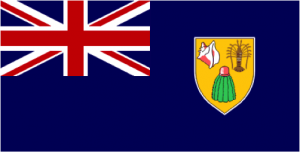
Searches
Trademark availability searches are made according to the international nomenclature of the Nice Agreement, applications may target one class or multiclass trademarks. Device marks can be searched. The approximate time frame to receive the results is within 1 to 3 days.
Application
Trademark filing applications require the name, address and nationality of the applicant; a description or reference to a description of the mark, six logos (if applicable), a translation or transliteration (if applicable); the class(es) for which the registration is required (Nice classification), and whether priority is claimed. The application number is assigned as soon as the application is received and vetted by the Registry and is registrable the number is assigned immediately. At filing the application is not necessary to specify actual use or intent use of the mark.
The criteria applied by the Examiner at the moment of examining the applications may be for absolute causes and/or relative causes.
Absolute causes: To examine whether the application complies with the requirements and determine if the mark is registrable. A trademark cannot be validly registered: (a) if it is incapable of distinguishing the goods or services of one enterprise from those of other enterprises; (b) if it is contrary to public order or morality; (c) if it is likely to mislead the public or trade circles, in particular as regards the geographical origin of the goods or services concerned or their nature or characteristics; (d) if it is identical with, or is an imitation of or contains as an element, an armorial bearing, flag or other emblem, a name or abbreviation or initials of the name of, or official sign or hallmark adopted by, any State, intergovernmental organization or organization created by an international convention, unless authorized by the competent authority of that State or organization.
Relative causes: (a) if it is identical with, or confusingly similar to, or constitutes a translation of, a trademark or trade name which is well known in Anguilla for identical or similar goods or services of another enterprise; (b) if it is well known and registered in Anguilla for goods or services which are not identical or similar to those in respect of which registration is applied for, if, in the latter case, use of the trademark in relation to those goods or services would indicate a connection between those goods or services and the owner of the well-known trademark and that the interests of the owner of the well-known trademark are likely to be damaged by such use; or (g) if it is identical with a trademark belonging to a different proprietor and already on the Register, or with an earlier filing or priority date, in respect of the same goods or services or closely related goods or services, or if it so nearly resembles such a trademark as to be likely to deceive or cause confusion.
The application can be refused on the basis of a non-registered well-known marks owned by third parties. The procedure available to respond to a refusal is to appeal to the High Court. The applicable law is the Trademark Act and Regulations 2002. Once the applications have been examined in form and substance, they are published. Then the application can be subject of an opposition. The time limit to interpose the action, in the case of a local application, is within one month from the date of advertisement; any interested person may lodge a notice of application of opposition with a statement of grounds. It takes approximately 3 to 6 months from publication to issuance the registration certificate.
Registration
Once the registration is granted, there are not maintenance fees due to keep it alive. The first renewal due is 10 years from filing date of the application for registration.
Cancellation
A registration can be cancelled for non-use. This action of cancellation can be interposed after 3 or longer consecutive years from the last use. This action of cancellation can be interposed only by a third party.
Nullity
Likewise, a registration can be subject of a nullity action, raised by a third party. The Registrar shall invalidate the registration if the person requesting the invalidation proves that the mark is not a validly registered trademark. In addition to the grounds provided by the applicant, the Registrar shall invalidate the registration of a collective mark if the person requesting the invalidation proves that only the registered owner uses the mark, or that he uses or permits its use in contravention of the regulations referred to in section 5 (2) (b) of the local law or that he uses or permits its use in a manner liable to deceive trade circles or the public as to the origin or any other common characteristics of the goods or services. This action is interposed before the Trademark Office; the appeal is interposed before the High Court. The time frame to obtain a decision varies. The law applicable is the Trademark Act and Regulations 2002.
Assignments and renewals
In order to record an assignment, it is required certified copies of the agreement; and Power of Attorney. In the case of renewals of trademark registrations, it is required a Power of Attorney. In both cases the time frame to obtain such certificates is within 3 to 6 months.
